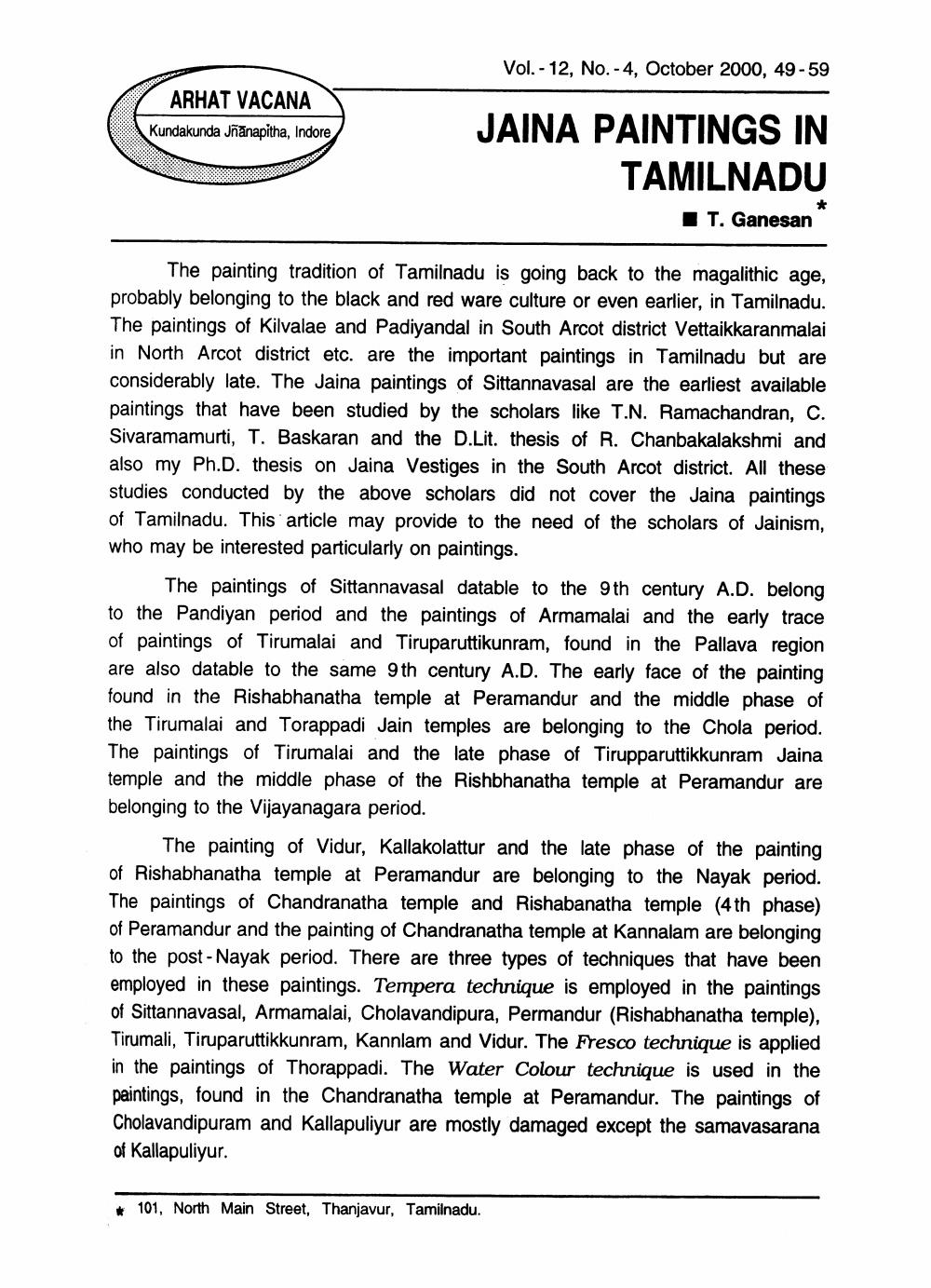________________
Vol. - 12, No.-4, October 2000, 49-59
ARHAT VACANA Kundakunda Jñanapitha, Indore
JAINA PAINTINGS IN
TAMILNADU
T. Ganesan
The painting tradition of Tamilnadu is going back to the magalithic age, probably belonging to the black and red ware culture or even earlier, in Tamilnadu. The paintings of Kilvalae and Padiyandal in South Arcot district Vettaikkaranmalai in North Arcot district etc. are the important paintings in Tamilnadu but are considerably late. The Jaina paintings of Sittannavasal are the earliest available paintings that have been studied by the scholars like T.N. Ramachandran, C. Sivaramamurti, T. Baskaran and the D.Lit. thesis of R. Chanbakalakshmi and also my Ph.D. thesis on Jaina Vestiges in the South Arcot district. All these studies conducted by the above scholars did not cover the Jaina paintings of Tamilnadu. This article may provide to the need of the scholars of Jainism, who may be interested particularly on paintings.
The paintings of Sittannavasal datable to the 9th century A.D. belong to the Pandiyan period and the paintings of Armamalai and the early trace of paintings of Tirumalai and Tiruparuttikunram, found in the Pallava region are also datable to the same 9th century A.D. The early face of the painting found in the Rishabhanatha temple at Peramandur and the middle phase of the Tirumalai and Torappadi Jain temples are belonging to the Chola period. The paintings of Tirumalai and the late phase of Tirupparuttikkunram Jaina temple and the middle phase of the Rishbhanatha temple at Peramandur are belonging to the Vijayanagara period.
The painting of Vidur, Kallakolattur and the late phase of the painting of Rishabhanatha temple at Peramandur are belonging to the Nayak period. The paintings of Chandranatha temple and Rishabanatha temple (4th phase) of Peramandur and the painting of Chandranatha temple at Kannalam are belonging to the post - Nayak period. There are three types of techniques that have been employed in these paintings. Tempera technique is employed in the paintings of Sittannavasal, Armamalai, Cholavandipura, Permandur (Rishabhanatha temple), Tirumali, Tiruparuttikkunram, Kannlam and Vidur. The Fresco technique is applied in the paintings of Thorappadi. The Water Colour technique is used in the paintings, found in the Chandranatha temple at Peramandur. The paintings of Cholavandipuram and Kallapuliyur are mostly damaged except the samavasarana of Kallapuliyur.
* 101, North Main Street, Thanjavur, Tamilnadu.




